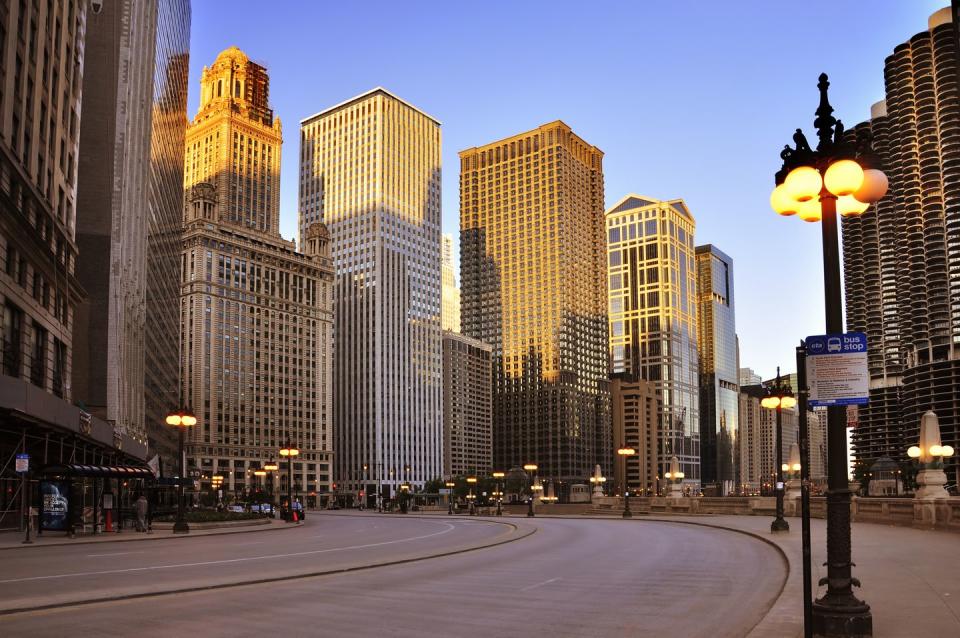You Can Leave Your Home During a "Shelter in Place" Order, But Only Under Certain Circumstances
It’s completely jarring these days when you turn on the TV, and all the happy people in commercials and sitcoms are meeting for coffee, romping on the beach, and having dinner with friends who don’t live in their immediate household. It’s a reminder of life before the COVID-19 crisis made "social distancing" and “shelter in place” the new normal.
But even with more than 300 million Americans under orders to stay home unless absolutely necessary, the terminology can be a little confusing. For example, the earliest order to stay home came on March 16 from the San Francisco Department of Public Health, which used the term “shelter in place” when telling Bay Area residents to stay at home to try to slow down the spread of the deadly virus.
The next major proclamation came on March 19, when California Governor Gavin Newsom released an executive order asking everyone in the state to “stay at home.” The following day, when New York Governor Andrew Cuomo announced the New York State on PAUSE (Policies Assure Uniform Safety for Everyone) plan, he was very careful not to use the term “shelter in place,” which he said was a scary phrase, too closely connected to situations such as school shootings. “Words matter,” pointed out the governor.
As COVID-19 started to spread, most states followed with their own executive orders: As of this article's publish date, the only states that have no restrictions in place are North Dakota, South Dakota, Nebraska, Iowa, and Arkansas. And while individual cities in Wyoming, Utah, South Carolina, and Oklahoma have issued their own stay-home rules, there are no statewide orders.
While some of 42 states now on lockdown have their own unique rules (for example, in Hawaii, surfing and swimming are considered essential activities), they mostly follow the same guidelines. Here’s what you need to know:
What does "shelter in place" actually mean?
In the past, "shelter in place" has been used to instruct people to stay safely in the building (or car) that they're already in, rather than trying to evacuate or run for safety when there's an immediate danger outside, such as an active shooter, a wild animal on the loose, or a bomb. In 2020, however, the term has taken on a very different meaning: It is a government order for all nonessential workers to stay at home for an extended period of time, going out only for very specific reasons, and maintaining social distancing, all to slow the spread of COVID-19.

Who is allowed to go to work?
While everyone may rightly believe the work they do is essential, most states have deemed only the businesses that keep society safely running are “essential.” These include (but are not limited to):
Grocery stores and convenience stores
Pharmacies
Health care providers
Child care providers
Animal shelters, veterinary offices, pet-food stores
Restaurants offering takeout or delivery
Gas stations
Laundromats, dry cleaners
Funeral homes
Dentists, therapists
Transportation and infrastructure workers
Hotels and airlines
News media
Homeless shelters/food banks
Are you allowed to leave your house at all?
Yes, but with restrictions. If you are not an essential worker, stay at home unless you have to buy groceries, pick up takeout food or medications, go to the doctor, or take your dog for a walk. You are allowed to go outside for exercise and fresh air, but do it with an abundance of caution, including wearing face masks and remaining 6 feet away from anyone who is not in your immediate household. The elderly and those with greater health risks, such as those with HIV, heart disease, diabetes, or chronic lung disease, are advised to stay in at all times, except for absolute necessities, such as doctor visits and to buy food (some stores are setting aside certain hours for seniors-only shopping to help reduce the risk).
What is definitely not allowed during a shelter in place order?
Any nonessential gatherings of any kind. No birthday parties, picnics, soccer games, dinner parties, group walks (unless everyone is walking very, very far apart). Also, cancel any nonessential travel, whether that means taking the subway or bus to hang out with a friend, or traveling to another state. If you need to have social time with friends, meeting up over FaceTime or Zoom will have to do for now.
What will happen if you break the rules?
It depends on the state, but many have said they will impose fines — or even criminal charges — if businesses or individuals are caught disregarding the rules. In New York, for example, Governor Cuomo said, “These are legal provisions. They will be enforced. There will be a civil fine and mandatory closure for any business that is not in compliance.” And some states, like Michigan, have announced fines up to $1,000 for any civilians who are caught breaking the order.
To find out exactly what the rules are in your state, click on this map, which is updated regularly.
You Might Also Like

